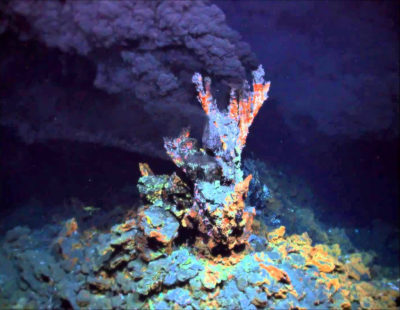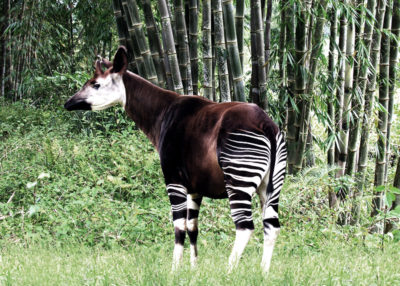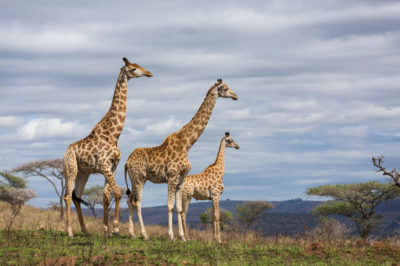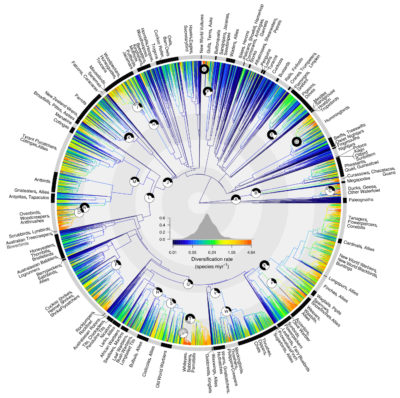by Richard William Nelson | Jan 24, 2013
 Origin of life researchers collected “new insights” from a new paper entitled “The origin of membrane biogenetics,” published in the December issue of the journal Cell. The media elevated the hype into an origin-of-life sea saga spectacle.
Origin of life researchers collected “new insights” from a new paper entitled “The origin of membrane biogenetics,” published in the December issue of the journal Cell. The media elevated the hype into an origin-of-life sea saga spectacle.
The journal Nature covered the paper in an article entitled “How life emerged from deep-sea rocks” by Ed Yong. The subtitle. “The origin of ion-pumping proteins could explain how life began in and escaped from undersea thermal vents,” seemed to seal the deal.
Continue Reading
by Richard William Nelson | Dec 20, 2012
 Charles Darwin‘s story of how the giraffe got its long neck is one of the most popular and widely-told stories in the history of evolution. At the center of the giraffe evolution story is the African okapi (pictured left).
Charles Darwin‘s story of how the giraffe got its long neck is one of the most popular and widely-told stories in the history of evolution. At the center of the giraffe evolution story is the African okapi (pictured left).
The story begins with Darwin speculating on a transitional link. In The Origin of Species, Darwin wrote –
“It seems to me almost certain that an ordinary hoofed quadruped might be converted into a giraffe.”
Continue Reading
by Richard William Nelson | Dec 4, 2012
 Africa’s majestically bizarre leaf-eating giraffe once served as an elite status symbol. Even from early civilizations, images of the giraffe are etched and sketched into the rock all over Africa. Puzzling over how the giraffe got its long neck and gentle behavior, the giraffe was the prize of Kings.
Africa’s majestically bizarre leaf-eating giraffe once served as an elite status symbol. Even from early civilizations, images of the giraffe are etched and sketched into the rock all over Africa. Puzzling over how the giraffe got its long neck and gentle behavior, the giraffe was the prize of Kings.
In 46 BC, Julius Caesar brought the first giraffe into Europe. Seeming to blend the characteristics of the camel and leopard, the Romans named the giraffe a “cameleopard.” Caesar presented giraffes to lions in Roman arenas to shred and shock audiences.
Continue Reading
by Richard William Nelson | Nov 20, 2012
 Life originated in “a warm little pond,” Charles Darwin wrote to Joseph J. Hooker, the founder of geographical botany within Darwin’s circle of colleagues. How, where, and when the first species got started, however, completely escaped Darwin.
Life originated in “a warm little pond,” Charles Darwin wrote to Joseph J. Hooker, the founder of geographical botany within Darwin’s circle of colleagues. How, where, and when the first species got started, however, completely escaped Darwin.
In contemplating the origin of life dilemma, Darwin noted in his autobiography –
“The mystery of the beginning of all things is insoluble by us, and I, for one, must be content to remain an agnostic.”
Continue Reading
by Richard William Nelson | Nov 6, 2012
 Scientists last week proposed new evolutionary relationships among all 9,993 of the world’s known living bird species. In a letter published in the prestigious Nature journal, scientists reported on the use of DNA-sequence data to create a radiating phylogenetic tree, a revolutionary new bird tree of life (pictured left).
Scientists last week proposed new evolutionary relationships among all 9,993 of the world’s known living bird species. In a letter published in the prestigious Nature journal, scientists reported on the use of DNA-sequence data to create a radiating phylogenetic tree, a revolutionary new bird tree of life (pictured left).
Walter Jetz (pictured right), an evolutionary biologist at Yale University in New Haven, Connecticut, was the leading author of the letter entitled “The global diversity of birds in space and time.” In an interview with science writer Virginia Gewin for Nature News, Jetz explains –
“This is the first dated tree of life for a class of species this size to be put on a global map.”
Continue Reading
 Origin of life researchers collected “new insights” from a new paper entitled “The origin of membrane biogenetics,” published in the December issue of the journal Cell. The media elevated the hype into an origin-of-life sea saga spectacle.
Origin of life researchers collected “new insights” from a new paper entitled “The origin of membrane biogenetics,” published in the December issue of the journal Cell. The media elevated the hype into an origin-of-life sea saga spectacle.
 Charles Darwin
Charles Darwin Africa’s majestically bizarre leaf-eating giraffe once served as an elite status symbol. Even from early civilizations, images of the giraffe are etched and sketched into the rock all over Africa. Puzzling over how the giraffe got its long neck and gentle behavior, the giraffe was the prize of Kings.
Africa’s majestically bizarre leaf-eating giraffe once served as an elite status symbol. Even from early civilizations, images of the giraffe are etched and sketched into the rock all over Africa. Puzzling over how the giraffe got its long neck and gentle behavior, the giraffe was the prize of Kings. Life originated in “a warm little pond,”
Life originated in “a warm little pond,”  Scientists last week proposed new evolutionary relationships among all 9,993 of the world’s known living bird
Scientists last week proposed new evolutionary relationships among all 9,993 of the world’s known living bird 